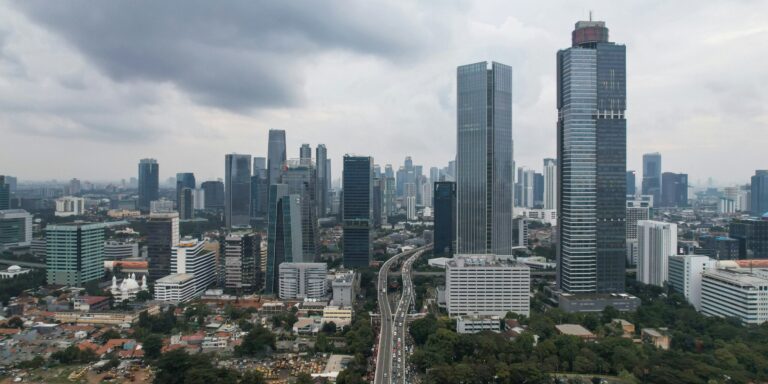The global economy is heading toward a period of stagnation that could be the worst seen since the 1960s, according to a new warning from the World Bank. The institution’s latest projections for 2025 indicate a mere 2.3% global growth, marking the slowest pace of expansion in a non-recession year since the global financial crisis of 2008. This downturn reflects a series of ongoing challenges, from lingering effects of the pandemic to escalating trade tensions and the continuing global energy crisis. If the World Bank’s forecasts prove accurate, the 2020s will average only 2.5% annual growth, a dramatic decline from the more robust periods of growth experienced in the past few decades.
The factors behind this projected slowdown are multifaceted. A key contributor is the trade policies of former U.S. President Donald Trump, particularly his imposition of tariffs on numerous goods from countries like China. These tariffs alone have been blamed for lowering global GDP projections by 0.5 percentage points, underlining the long-lasting impacts of trade wars and the uncertainty they create in global markets. Despite the end of Trump’s presidency, the consequences of these policies continue to ripple through the world economy.
The World Bank’s findings underscore the deep structural issues that have hindered recovery in the wake of the COVID-19 pandemic. The disruption caused by the health crisis continues to affect industries, supply chains, and labor markets, making a full rebound difficult. Additionally, the ongoing global energy crisis—exacerbated by geopolitical instability and concerns over climate change—has contributed to rising energy prices and has further strained economic growth in many regions.
Comparing Forecasts: A More Optimistic Outlook from the OECD
The World Bank’s outlook stands in contrast to more optimistic projections from other international institutions. The Organization for Economic Co-operation and Development (OECD) has forecast a slightly higher global growth rate of 2.9% for 2025, offering a more positive view of the world economy. While the OECD’s forecast is certainly more upbeat, the stark differences between the two agencies’ projections highlight the uncertainty facing global markets as countries navigate the ongoing aftermath of the pandemic and shifting geopolitical landscapes.
U.S. and China Show Signs of Slower Growth
Two of the world’s largest economies, the United States and China, are expected to see a significant deceleration in growth in the coming years. The World Bank has downgraded its U.S. growth forecast for 2025 to just 1.4%, a major slowdown from previous years. This figure reflects not only the broader global trends but also domestic challenges within the U.S. economy, such as inflationary pressures, labor market changes, and the effects of tighter monetary policies aimed at curbing rising prices.
China, the world’s second-largest economy, is also facing significant challenges. After years of rapid expansion, China’s economic growth is projected to dip below its 5% target for 2025. The country’s struggle to recover from COVID-19, combined with an ongoing real estate crisis and weaker consumer spending, is contributing to a broader economic slowdown. As a result, China’s economic troubles are having far-reaching implications for global trade and investment.
Steep Downgrades in Developing Economies
The report from the World Bank also highlighted significant downgrades in several developing economies, including Thailand, South Africa, and the United States. In these regions, growth prospects are particularly bleak, with factors like political instability, inflationary pressures, and weak domestic demand contributing to lower-than-expected growth rates.
These countries are facing a unique set of challenges, including the impacts of climate change, supply chain disruptions, and the slow rollout of COVID-19 vaccines in many parts of the world. The uneven nature of the global recovery is likely to exacerbate inequality, as wealthier nations benefit from stronger economic fundamentals, while poorer countries struggle to maintain growth amid rising costs and declining demand for exports.
Trade Barriers and Policy Recommendations
In light of the challenging economic outlook, the World Bank has urged countries to take proactive steps to stimulate growth. One key recommendation is for nations to lower trade barriers, as reducing tariffs could potentially boost global growth by 0.2 percentage points in both 2025 and 2026. This policy shift would help to ease some of the economic strain caused by the current protectionist tendencies seen in many countries, allowing for more robust global trade and investment flows.
The United States, as one of the largest economic players in the world and a significant influence over global institutions like the International Monetary Fund (IMF) and the World Bank, has also been a driving force behind these policy discussions. The U.S. has been pushing for reforms in global governance, including measures to lift restrictions on nuclear energy funding, which could play a key role in addressing the global energy crisis.
Looking Ahead: Navigating an Uncertain Future
As the world enters a decade marked by slower-than-expected growth, governments and policymakers will need to navigate a complex and volatile landscape. The forecasted economic slowdown is likely to place additional pressure on global leaders to find innovative solutions to issues like climate change, trade imbalances, and geopolitical tensions.
In particular, the focus will likely shift toward fostering economic resilience through better cooperation on trade, investment, and climate adaptation. By addressing these issues head-on, there may still be opportunities for long-term growth, even amid the difficult realities of the 2020s. However, for now, the World Bank’s warning serves as a stark reminder of the challenges ahead and the need for coordinated global action to secure a more stable economic future.


